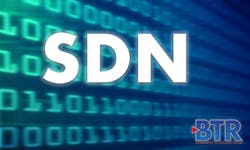Virtualization in the form of SDN and NFV could bring operators many benefits, like dynamic allocation and the optimization of services. But it comes at a cost in service assurance, said Gregg Hara, VP of business development and marketing at Centina Systems.
"These (systems) are starting to roll out. Later in 2017 and into 2018 (we will see) a lot of production," Hara said. "The solutions have to have the same quality as existing carrier grade services … I have really not seen it (possible) to take existing performance systems and extend them easily to virtual services."
The complexity comes from the number of virtual components (router, switch, etc.) that all have to be tracked in order to determine the health of the service. It is also important for a virtual assurance monitor to tie in with the network functions virtualization (NFV) manager, software defined networking (SDN) controller or orchestration system to notify users of the problem and request that changes be made dynamically, Hara said.
"Any one of these can make changes dynamically to the virtual service, but they don't have visibility beyond themselves," Hara said. "Orchestration has a broader sense of the virtual service (than NFV manager or SDN controller), but it probably won't have a good sense of performance of the components."
A virtual assurance monitor, on the other hand, offers optimization - by detecting performance issues like a network overload, and communicating an instruction to add more memory, for example - and remediation.
"If something goes down, (the monitor) can communicate back to the orchestration system to reroute the service … through another router," Hara said.
Another complication is being able to tie the virtual and physical together under an assurance umbrella. "The underlying (physical) infrastructure is never going away. If something happens to the SONET ring, it will impact the virtual service," Hara said.
Hara also urges operators to look at the bigger picture when it comes to virtual monitoring. A company might choose a software defined wide area network (SD-WAN) solution from one vendor, which has its own monitoring tool, but it will not necessarily work for anything else, including if the operator decides to use an orchestration system from another vendor. They will need a way to tie everything together.
"All customers care about is service and price. They don't know what virtual means. They want to know the service is working and [that] they are getting the best price and performance," Hara said.
It is a given that a virtual assurance monitor should be able to help operators extend service level agreements (SLAs) in a virtual environment, but Hara said these tools also can also step up and offer a pre-breach fix. and monitor the SLA in real time to alert users before there is a breach.
"Instead of waiting until the end of the month or running a report on demand, (a solution should) monitor in real time and alert before they breach the SLA," Hara said.





